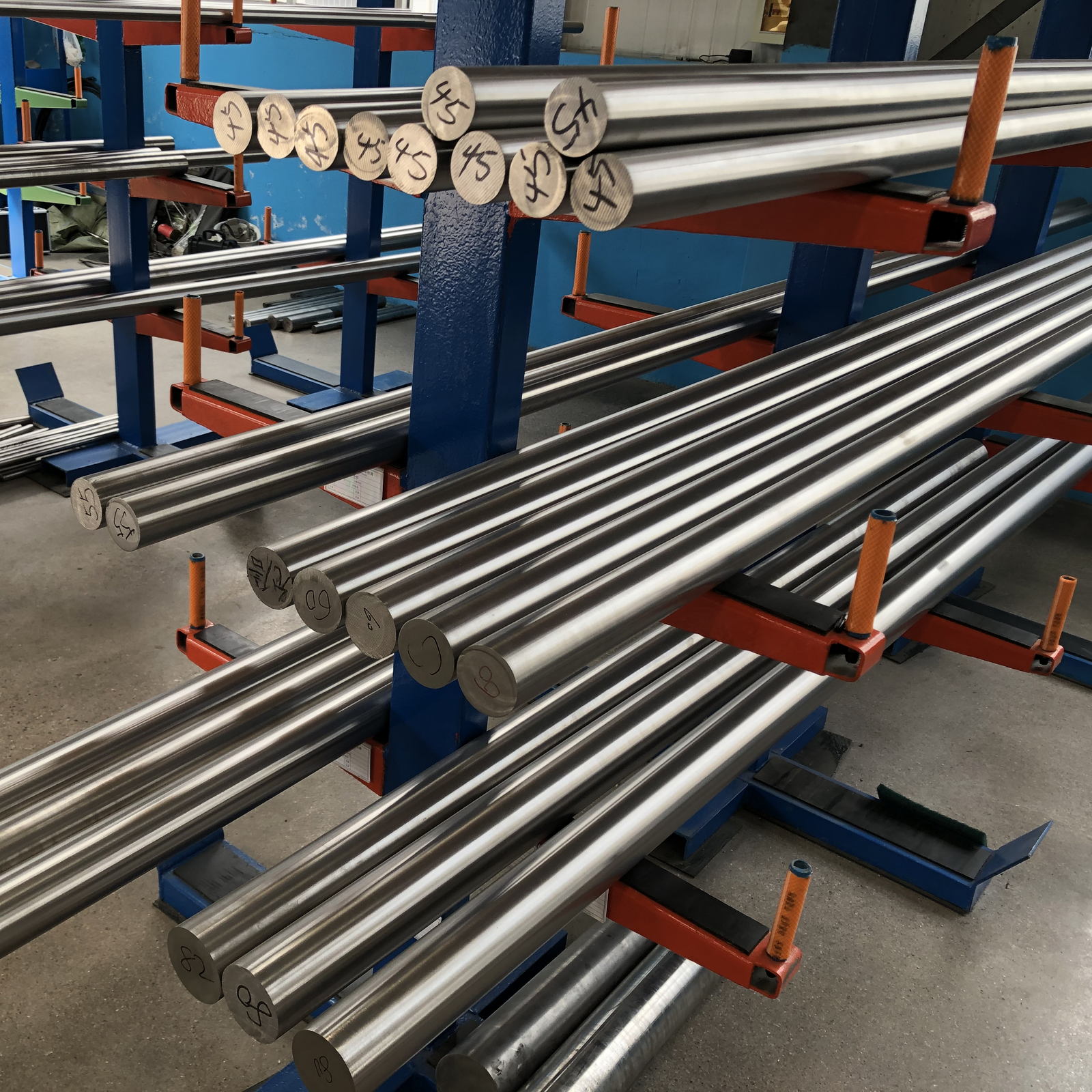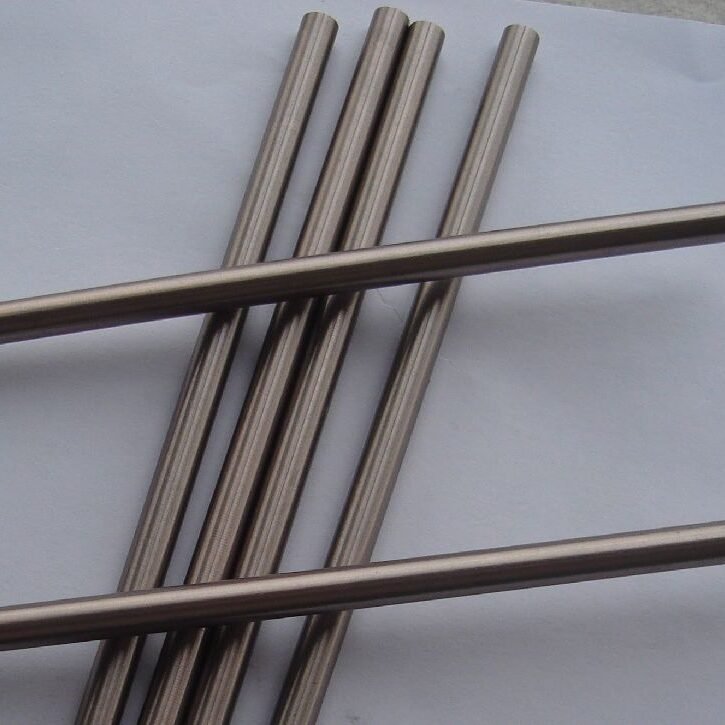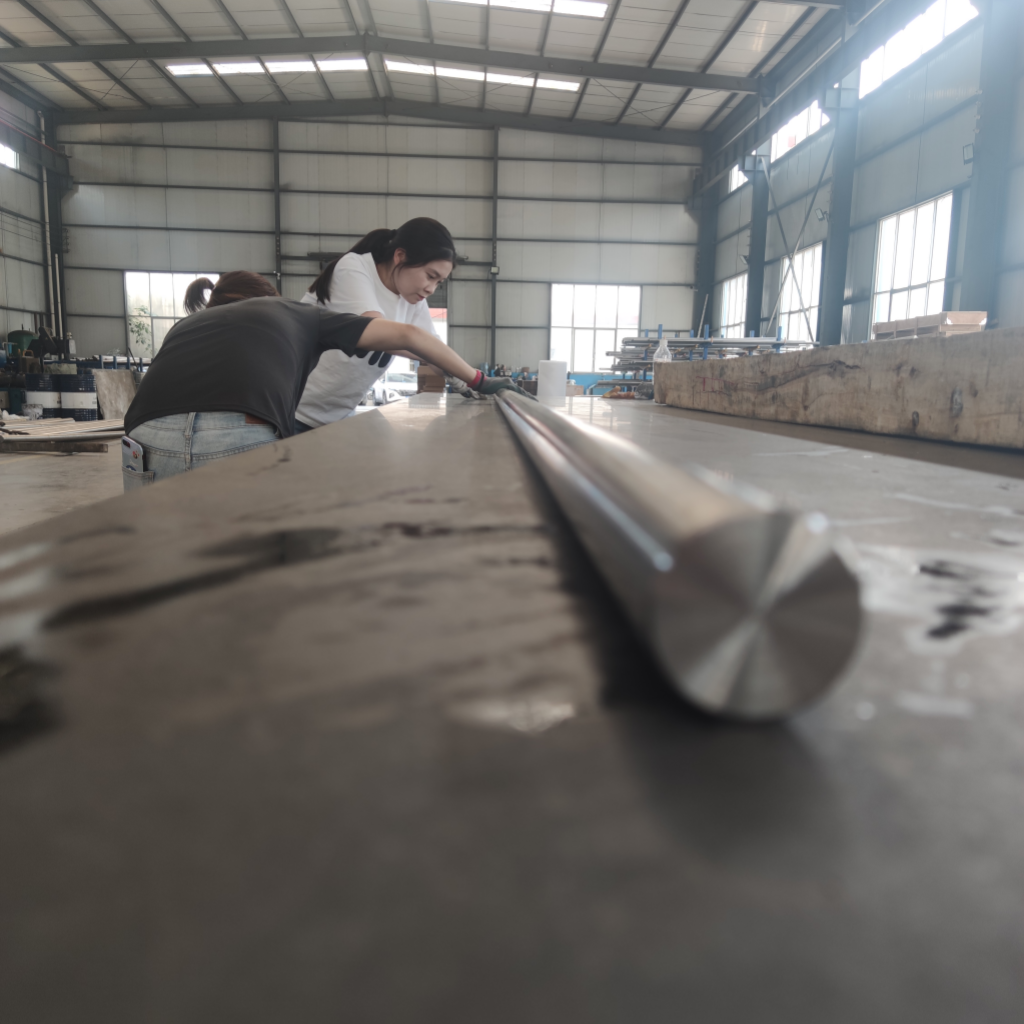Titanium, known for its strength-to-weight ratio and corrosion resistance, has been vital in aerospace, medical, and automotive industries.With growing demand, ensuring the safety and reliability of titanium products is more important than ever.This article explores titanium safety innovations, highlighting five key advancements shaping its future applications.
In recent years, research and development in titanium alloys have yielded materials with enhanced mechanical properties, pushing the boundaries of what’s possible in structural integrity and durability. Manufacturing processes now use technologies like additive manufacturing and precision casting to achieve high precision and reliability in titanium components.
Beyond material and manufacturing advances, innovative structural designs are redefining safety standards, optimizing performance under extreme conditions while minimizing risks. Integrated quality control, using advanced non-destructive testing (NDT), ensures each titanium component meets strict safety standards before use.
Sustainability is now key in titanium production, with leaders adopting eco-friendly practices to reduce environmental impact without compromising safety or quality.These advancements not only enhance operational efficiency but also underscore titanium’s role in sustainable, future-proof solutions across global industries.
These innovations promise a future where titanium raises safety benchmarks, boosting reliability and performance. This article delves into each innovation’s significance, showcasing how they collectively propel titanium towards an era of unparalleled safety and reliability in critical applications.

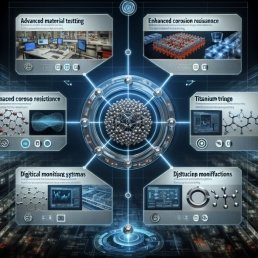
1.Advanced Material Formulations
Titanium alloys are at the forefront of material innovation, continuously evolving to meet the stringent demands of modern industrial applications. This section explores the latest advancements in titanium material formulations that enhance safety and reliability across various industries.
1.1 Introduction to Advanced Titanium Alloys
- Titanium’s intrinsic properties: strength, lightweight, and corrosion resistance
- Evolution from commercially pure titanium to advanced alloy formulations
1.2 Innovative Titanium Alloys Enhancing Safety
Titanium alloys have undergone significant development to optimize mechanical properties, reliability, and safety in critical applications. Innovations include:
- High-Strength Alloys: Titanium alloys with enhanced tensile strength and fatigue resistance, ideal for aerospace and automotive safety-critical components.
- Corrosion-Resistant Alloys: Alloys designed to withstand harsh environments, ensuring long-term reliability in marine, chemical processing, and medical applications.
- Biocompatible Alloys: Titanium alloys tailored for medical implants, balancing biocompatibility with mechanical strength to promote patient safety and longevity.
1.3 Future Trends in Material Development
- Emerging trends in titanium alloy research: nanotechnology, multi-phase alloys, and composite materials
- Potential applications and benefits for safety and reliability in extreme environments
1.4 Conclusion
- Recap of how advanced titanium alloys are driving safety and reliability across industries
- Future prospects for continued innovation in material formulations and their impact on global safety standards
2.Enhanced Manufacturing Processes
Advanced manufacturing technologies have revolutionized the production of titanium components, ensuring superior quality, precision, and reliability across critical industries. Additive Manufacturing (AM) has emerged as a game-changer, enabling the creation of complex geometries and reducing material waste significantly. This technology is pivotal in aerospace and medical sectors for producing customized, lightweight components with enhanced structural integrity. Precision casting complements AM by achieving near-net-shape parts, minimizing machining requirements and enhancing production efficiency. CNC machining further refines these components, ensuring dimensional accuracy and surface finish crucial for safety-critical applications. Surface treatments like shot peening and plasma electrolytic oxidation (PEO) enhance corrosion resistance and fatigue life, extending titanium component lifespan in harsh environments.
In aerospace, advanced processes produce titanium aircraft structures with unmatched strength-to-weight ratios, improving fuel efficiency and performance. In the medical field, these processes produce biocompatible titanium implants with precise surfaces, ensuring integration and patient safety. The future integration of robotics, digital twins, and AI-driven optimizations will enhance precision, efficiency, and titanium reliability in global industries.
3.Innovative Structural Design
Innovative structural design enhances titanium safety and reliability, pushing performance limits under extreme conditions while reducing risks. This section explores how cutting-edge design concepts are shaping the future of titanium applications across various industries.
Titanium design innovations optimize strength, weight, and functionality to meet the demands of aerospace, automotive, and medical sectors.Using advanced modeling and simulation, engineers design titanium components to withstand high stress and fatigue, ensuring safety in critical applications.
In aerospace, titanium designs improve aerodynamic efficiency and reduce weight, boosting fuel efficiency and performance. These designs combine complex geometries and materials for an optimal strength-to-weight balance, crucial for aircraft safety.
Similarly, in automotive applications, innovative structural designs in titanium contribute to enhanced crashworthiness and vehicle safety. Titanium’s exceptional energy absorption capabilities make it ideal for use in safety-critical components such as chassis reinforcements and impact-absorbing structures, protecting occupants during collisions while reducing vehicle weight.
In medicine, design innovations focus on biocompatibility and durability, ensuring titanium implants integrate well with the body and offer long-term reliability. Customized designs and surface finishes enhance implant performance, promoting faster healing and reducing complications in orthopedic and dental procedures.
Looking ahead, advancements in additive manufacturing and composite materials promise to further revolutionize structural design capabilities in titanium. These technologies create intricate, lightweight structures with greater strength and functionality, expanding possibilities for safer titanium applications.
In conclusion, structural innovations continue advancing titanium safety and reliability, pushing boundaries in critical applications. Integrating advanced materials, modeling, and manufacturing, engineers design titanium structures that exceed safety standards, keeping titanium at the forefront of high-performance industries.
4.Integrated Quality Control Systems
Integrated quality control systems ensure the safety, reliability, and performance of titanium products in aerospace, medical, and automotive industries. These systems maintain high standards from raw material selection to final inspection. This section explores how advanced technologies and strict quality management uphold standards in titanium manufacturing.
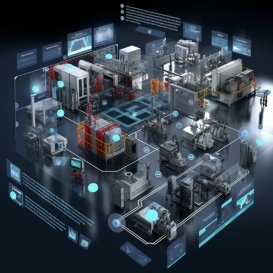
4.1 Importance of Quality Control in Titanium Production
Quality control is vital in titanium production, directly affecting the safety and reliability of products. Titanium’s strength-to-weight ratio and corrosion resistance make it ideal for critical applications. However, without stringent quality control measures, these advantages could be compromised by defects or inconsistencies.Following international standards like ISO 9001 and AS9100 ensures titanium products meet safety and performance criteria, reducing failure risks in demanding environments.
4.2 Advanced Non-Destructive Testing (NDT) Technologies
Non-Destructive Testing (NDT) technologies are indispensable tools in the quality control arsenal for titanium manufacturing. Ultrasonic Testing (UT), Radiographic Testing (RT), and Eddy Current Testing (ET) help detect internal and surface defects without damaging the material. These methods are crucial for verifying the integrity of titanium components, ensuring they meet stringent specifications. UT detects internal flaws in titanium forgings, RT finds defects in complex shapes, and ET identifies surface cracks. Using NDT at different stages ensures only defect-free components move to the next phase, maintaining high quality.
4.3 Implementation of Rigorous Inspection Protocols
Strict inspection protocols catch defects early, preventing them from affecting the final product. These protocols include initial inspections of raw materials, in-process checks during manufacturing, and final inspections before products are shipped. Each stage employs a combination of visual inspections, NDT methods, and dimensional measurements to ensure compliance with specifications. Case studies from the aerospace and medical industries highlight the effectiveness of these protocols. In aerospace, strict inspections of components like turbine blades are crucial, as minor defects can cause catastrophic failures. Similarly, in the medical field, titanium implants undergo rigorous inspections to ensure biocompatibility and dimensional accuracy, crucial for patient safety.
4.4 Quality Management Systems (QMS)
Quality Management Systems (QMS) such as ISO 9001 and AS9100 provide a structured framework for managing and improving quality in titanium manufacturing. These systems encompass all aspects of production, from design and development to manufacturing and post-production services. Implementing QMS ensures that all processes are standardized, documented, and continuously monitored for compliance with quality standards. The benefits of a robust QMS include improved product consistency, enhanced customer satisfaction, and a culture of continuous improvement. Additionally, QMS frameworks ensure traceability and accountability, critical in aerospace for safety compliance.
4.5 Role of Data Analytics and Digitalization
The integration of data analytics and digitalization into quality control systems is revolutionizing titanium manufacturing. Real-time monitoring tools and predictive analytics enable manufacturers to detect potential issues before they escalate into defects. Digitalization also enhances efficiency by streamlining inspection processes and reducing manual errors. Digital twins, virtual replicas of physical components, enable detailed simulations and predictive maintenance, optimizing production and reducing downtime.These technologies improve quality and operational efficiency, making titanium manufacturing more competitive.
4.6 Case Studies and Industry Applications
- Aerospace: In the aerospace industry, integrated quality control systems are essential for producing titanium components such as aircraft structures, landing gear, and turbine blades. These components must adhere to stringent safety standards, with every aspect of their production meticulously monitored and controlled. NDT and QMS frameworks ensure components meet top reliability and performance standards, critical for aircraft safety.
- Medical: In the medical sector, the production of titanium implants, such as joint replacements and dental implants, requires precision and biocompatibility. Integrated quality control systems ensure that these implants are free of defects, have precise dimensions, and are safe for implantation. The use of NDT technologies in this context is critical for detecting internal defects that could compromise the implant’s integrity, while QMS frameworks ensure that production processes consistently yield high-quality, biocompatible products.
4.7 Future Directions in Quality Assurance
As technology advances, the field of quality assurance in titanium manufacturing is poised to benefit from emerging trends. AI-driven quality control systems are expected to enhance the precision and efficiency of inspections by automating defect detection and predicting potential issues. Blockchain technology offers the potential for greater transparency in the supply chain, ensuring that every step of the manufacturing process is traceable and verifiable. Continuous improvement methodologies, supported by data analytics and real-time monitoring, will further enhance the safety and reliability of titanium products. These innovations are set to solidify the role of titanium as a critical material in industries where safety and performance are paramount.
In conclusion, integrated quality control systems are instrumental in maintaining high standards of safety and reliability in titanium products. By leveraging advanced NDT technologies, rigorous inspection protocols, and robust quality management systems, manufacturers can ensure that titanium components meet or exceed customer expectations and regulatory requirements, reinforcing titanium’s reputation as a material of choice in critical applications.
Young Things Metal Co. Ltd. employs a comprehensive quality control system that includes advanced non-destructive testing (NDT) methods.These techniques allow us to detect potential defects early in the production process, ensuring that only the highest quality titanium components reach our customers. We strengthen our commitment to quality by adhering to international standards, ensuring all products meet safety and reliability requirements.
5. Environmental and Sustainability Considerations
As the global emphasis on environmental sustainability intensifies, the titanium industry is increasingly focused on implementing strategies that minimize environmental impact and promote sustainable practices. This section delves into the initiatives and innovations that are shaping the future of environmental stewardship within the titanium sector.

5.1 Introduction to Environmental Challenges
The production of titanium, while essential for various industries, presents several environmental challenges. Key concerns include the significant energy consumption required for titanium extraction and processing, as well as the extensive use of raw materials. The high temperatures needed for processes like smelting and forging contribute to a substantial carbon footprint. Additionally, the mining of titanium-bearing ores can lead to land degradation and habitat destruction if not managed responsibly. Recognizing these challenges, industry leaders are increasingly adopting sustainable practices to mitigate their environmental impact, ensuring that the growth of the titanium industry aligns with global environmental goals.
5.2 Green Manufacturing Practices
To address the environmental challenges associated with titanium production, many manufacturers are adopting green manufacturing practices. Energy-efficient technologies like advanced smelting and process optimization reduce the carbon footprint of titanium production. Using renewable energy, like solar and wind, helps minimize greenhouse gas emissions in production. These practices reduce environmental impact and enhance sustainability by cutting costs and boosting energy efficiency.
5.3 Recycling and Circular Economy
Recycling is a cornerstone of sustainable titanium production, playing a crucial role in reducing waste and conserving natural resources. Titanium scrap from production or end-of-life products can be recycled, reducing the need for virgin materials. Improved recycling technologies recover high-quality titanium from scrap, supporting a circular economy. This approach minimizes waste and improves the titanium supply chain’s sustainability by reducing the environmental impact of raw material extraction.
5.4 Life Cycle Assessment (LCA)
LCA methodologies evaluate titanium’s environmental impact across its life cycle, from extraction to disposal. LCA offers insights into titanium’s environmental footprint and highlights areas for sustainability improvements. Case studies in aerospace and medical fields show how LCA results encourage sustainable practices like using low-impact materials or optimizing processes.
5.5 Environmental Regulations and Compliance
Global environmental regulations and standards are becoming more stringent, and compliance is now a critical component of titanium production. Regulations governing emissions, waste management, and energy consumption are enforced to minimize the environmental impact of industrial activities. Titanium manufacturers must adopt strong compliance measures, such as regular environmental audits, emission monitoring, and waste management best practices. Compliance ensures legal requirements are met and boosts manufacturers’ reputations as responsible, eco-conscious entities, providing a competitive edge in the global market.
5.6 Corporate Social Responsibility (CSR) Initiatives
Corporate Social Responsibility (CSR) initiatives are increasingly being embraced by titanium manufacturers as part of their commitment to environmental stewardship and social responsibility. These initiatives often include community outreach programs, environmental education, and sustainable development projects. For example, some manufacturers have established partnerships with local communities to support reforestation efforts, promote environmental awareness, or develop infrastructure that benefits both the environment and society. CSR programs that focus on environmental sustainability not only contribute to the well-being of communities but also reinforce the manufacturer’s commitment to responsible business practices.
5.7 Future Trends in Sustainable Titanium Production
The future of sustainable titanium production is likely to be shaped by emerging technologies and innovations aimed at further reducing the environmental impact of manufacturing processes. Closed-loop systems, where waste materials are fully recycled and reused within the production process, represent one promising approach. Eco-friendly manufacturing processes that minimize energy consumption and reduce harmful emissions are also gaining traction. However, adopting these technologies presents challenges, such as the need for significant investment and potential disruptions to existing production methods. Despite these challenges, the potential benefits, including reduced environmental impact, cost savings, and enhanced product sustainability, make these trends a key focus for the industry’s future.
In conclusion, environmental and sustainability considerations are integral to the future of titanium production, shaping industry practices towards greater efficiency, resource conservation, and environmental responsibility. By embracing green manufacturing practices, promoting recycling initiatives, and complying with stringent environmental regulations, titanium manufacturers can contribute to a sustainable future while meeting the growing demand for high-performance materials.
At Young Things Metal Co. Ltd., we are dedicated to reducing our environmental footprint by adopting green manufacturing practices and promoting the recycling of titanium scrap. Our efforts include energy-efficient production processes and the integration of renewable energy sources to minimize our carbon footprint. We believe that sustainability and safety go hand in hand, and our initiatives are designed to ensure that our operations contribute positively to the environment while maintaining the highest standards of product quality.
6.Conclusion
Titanium remains a leading high-performance material, driven by innovations that improve safety, reliability, and sustainability across industries. From advanced formulations to quality control and innovative designs, titanium’s evolution highlights its key role in modern engineering.
Throughout this article, we have explored key advancements shaping the future of titanium safety and reliability:
- Advanced Material Formulations: Innovations in titanium alloys have enabled higher strength, improved corrosion resistance, and enhanced biocompatibility, catering to diverse industry needs from aerospace to medical implants.
- Enhanced Manufacturing Processes: Technologies such as additive manufacturing and precision casting have revolutionized titanium production, ensuring superior quality and efficiency while reducing environmental impact.
- Innovative Structural Design: Cutting-edge design concepts optimize titanium structures for maximum strength-to-weight ratios and durability, essential for aerospace, automotive, and medical applications.
- Integrated Quality Control Systems: Rigorous inspection protocols and advanced NDT technologies uphold stringent quality standards, ensuring the reliability and safety of titanium components in demanding environments.
- Environmental and Sustainability Considerations: The industry’s commitment to sustainability is evident through green manufacturing practices, recycling initiatives, and compliance with environmental regulations, securing a sustainable future for titanium production.
The trajectory of titanium innovation points towards continued advancements in materials, manufacturing processes, and sustainability practices. Emerging technologies such as AI-driven quality control and renewable energy integration promise further improvements in safety, efficiency, and environmental stewardship.
As titanium evolves, its versatility will drive new applications, pushing boundaries in aerospace, automotive, and medical fields. By embracing innovation and sustainability, the titanium industry is ready to meet future challenges while ensuring reliability and safety in demanding environments.
Looking forward, the trajectory of titanium innovation points towards continued advancements in materials, manufacturing processes, and sustainability practices. Emerging technologies such as AI-driven quality control and renewable energy integration promise further improvements in safety, efficiency, and environmental stewardship. At Young Things Metal Co. Ltd. we ensure our products remain reliable and safe in the most demanding environments.
Share this article
Written by : titaniumyx.com
Follow us
Table Of Content
Latest articles
November 21, 2024
November 21, 2024

